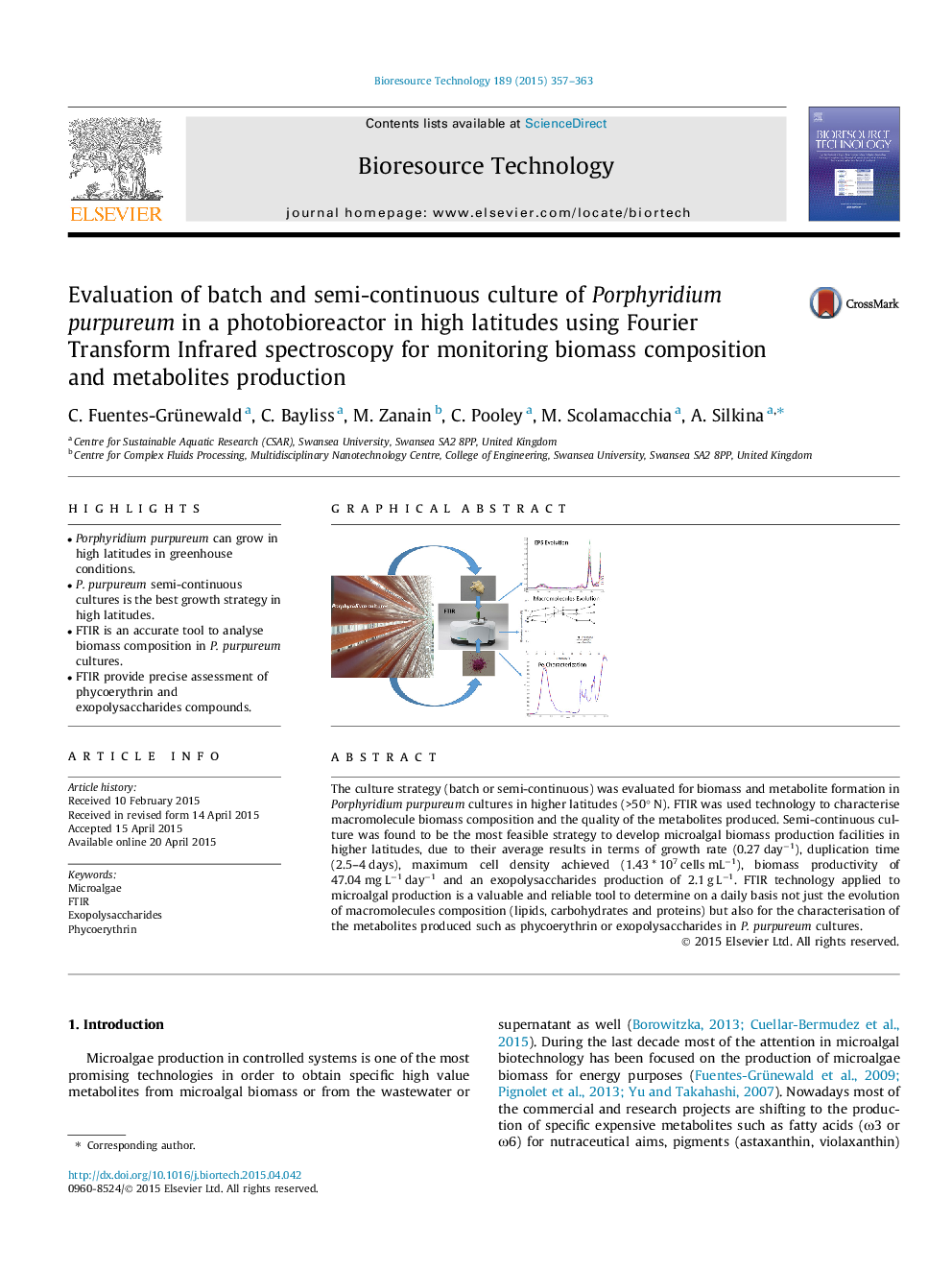| کد مقاله | کد نشریه | سال انتشار | مقاله انگلیسی | نسخه تمام متن |
|---|---|---|---|---|
| 679779 | 1459954 | 2015 | 7 صفحه PDF | دانلود رایگان |

• Porphyridium purpureum can grow in high latitudes in greenhouse conditions.
• P. purpureum semi-continuous cultures is the best growth strategy in high latitudes.
• FTIR is an accurate tool to analyse biomass composition in P. purpureum cultures.
• FTIR provide precise assessment of phycoerythrin and exopolysaccharides compounds.
The culture strategy (batch or semi-continuous) was evaluated for biomass and metabolite formation in Porphyridium purpureum cultures in higher latitudes (>50° N). FTIR was used technology to characterise macromolecule biomass composition and the quality of the metabolites produced. Semi-continuous culture was found to be the most feasible strategy to develop microalgal biomass production facilities in higher latitudes, due to their average results in terms of growth rate (0.27 day−1), duplication time (2.5–4 days), maximum cell density achieved (1.43 * 107 cells mL−1), biomass productivity of 47.04 mg L−1 day−1 and an exopolysaccharides production of 2.1 g L−1. FTIR technology applied to microalgal production is a valuable and reliable tool to determine on a daily basis not just the evolution of macromolecules composition (lipids, carbohydrates and proteins) but also for the characterisation of the metabolites produced such as phycoerythrin or exopolysaccharides in P. purpureum cultures.
Figure optionsDownload as PowerPoint slide
Journal: Bioresource Technology - Volume 189, August 2015, Pages 357–363